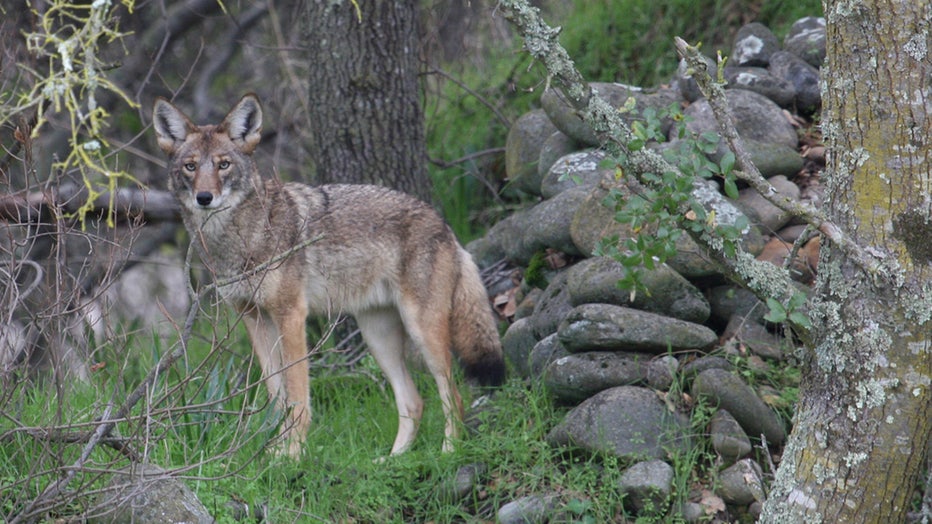10 ways to reduce your chances of a coyote attack or encounter
A coyote that was found at the New York State Museum was released back into the wild, March 28, 2018. (DEC)
NEW YORK - Coyotes are native to North America and are common in the tristate New York area. And they don't just live in captivity at the Queens Zoo.
In recent years, encounters with coyotes have been reported in suburban areas of northern New Jersey, the Bronx, Queens, and even in Manhattan. Coyotes have been spotted in Chelsea, Riverside Park, and most recently Central Park.
Coyotes typically feed on small rabbits, mice, voles, squirrels, and kangaroo rats, according to the Department of Interior's Bureau of Land Management. But in urban areas, coyotes go after pet cats and small dogs and scavenge in human trash.
"Coyotes are an integral part of our natural ecosystem and provide many benefits to New Yorkers," said Environmental Conservation Commissioner Basil Seggos said in a statement. "Coyotes will naturally avoid interacting with people if their fear of people is maintained, but if coyotes learn to associate people with food, conflicts can occur."
New York State's Department of Environmental Conservation does permit regulated hunting and trapping of coyotes because these activities increase the fear coyotes have towards people. New York's coyote-hunting season goes from Oct.1 through March 29.
Your chances of encountering a coyote are small but state officials say you can take some precautions to reduce the likelihood of coming teeth-to-flesh with the wild animal.
Here are some tips adapted from the state's Department of Environmental Conservation:
- Do not feed coyotes. Please.
- If you see a coyote, be aggressive—make loud noises, wave your arms, throw sticks and stones.
- Do not allow your pets to run free.
- Do not feed your pets outdoors.
- Secure your garbage so that coyotes and other animals can't get to it.
- Eliminate birdseed from around your property because coyotes are attracted to birds and rodents that come to feeders. If you do feed birds, clean up any leftover seed and seed that has spilled out of the feeder.
- A fence around your yard may deter coyotes. The fence should be tight to the ground, preferably extending six inches below ground level.
- Remove brush and tall grass from around your property to reduce protective cover for coyotes.
- Teach your children to appreciate coyotes—from a distance.
- Ask your neighbors to follow these same steps.
DEC Coyote Conflicts Resources

(USFWS)

